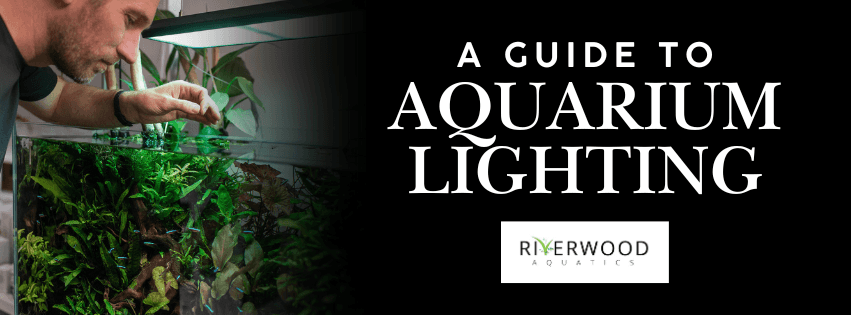A Guide To Aquarium Lighting
A Guide to Aquarium Lighting
Aquarium lighting is a critical aspect of maintaining a thriving and visually appealing aquarium. It plays a vital role in supporting plant growth, enhancing fish colouration, and creating an overall healthy ecosystem. In this guide we take a look into the different aspects of aquarium lighting, helping you make informed decisions for your setup.
Why is Aquarium Lighting Important?
- Photosynthesis: Just like terrestrial plants, aquatic plants require light for photosynthesis, the process of converting light energy into chemical energy for growth. Adequate lighting ensures healthy plant growth, which in turn provides oxygen, consumes nitrates, and offers shelter for fish.
- Fish Health and Colouration: Proper lighting helps regulate fish’s circadian rhythms, promoting natural behaviours and overall well-being. Furthermore, the right spectrum of light can enhance the natural colours of your fish, making them appear more vibrant and attractive.
- Visual Appeal: Aquarium lighting creates a more captivating visual experience. It highlights the beauty of your fish, plants, and aquascape, transforming your tank into a stunning focal point. Low lighting can make the tank appear dull and much less appealing.
- Algae Control: While some light is necessary, excessive or improper lighting can contribute to algae overgrowth. Understanding lighting requirements and duration can help maintain a balanced ecosystem.
Types of Aquarium Lighting:
- Fluorescent Lighting: Traditional fluorescent tubes (T5 and T8) were once the standard. T5s are more energy-efficient and offer higher intensity than T8s. While suitable for many setups, they have largely been superseded by LEDs.
- LED Lighting: Light-emitting diodes (LEDs) are now the most popular choice due to their energy efficiency, longevity, and versatility. They offer a wide range of colour temperatures and intensities, allowing for customisation to suit specific needs. LEDs also produce less heat, reducing the risk of overheating the aquarium. Some can even be controlled with apps or inline timers.
- Metal Halide Lighting: These lights produce very high intensity and are typically used for deep saltwater tanks or setups with demanding corals. They are less common in freshwater aquariums due to their high heat output and energy consumption.
Understanding PAR (Photosynthetically Active Radiation):
PAR refers to the portion of the light spectrum (400-700 nanometers) that plants use for photosynthesis. Measuring PAR in your aquarium can help determine if your plants are receiving adequate light.
- PAR Meters: These devices measure the amount of PAR reaching specific points in your aquarium.
- General Guidelines:
- Low-light plants: 75-100 μmol/m²/s
- Medium-light plants: 150 μmol/m²/s
- High-light plants: 200 μmol/m²/s and above
Wattage and Lighting Requirements:
Wattage is a measure of power consumption and can be used as a rough estimate of light intensity. However, it’s important to consider the type of lighting and the specific needs of your plants.
- General Guidelines for Planted Tanks (using LEDs):
- Low-light tanks: 0.25 – 0.5 watts per litre
- Medium-light tanks: 0.5 – 1 watt per litre
- High-light tanks: 1 watt per litre or more
These are just estimates, and factors like tank depth, plant species, and water clarity can influence the actual requirements.
Lighting Duration:
Most aquarium plants thrive with 6 -10 hours of light per day. A consistent light cycle is crucial for healthy plant growth and fish well-being. Using a timer ensures a regular photoperiod and takes away the risk of forgetting to turn on or off the light.
Mounting Options:
- Hanging: Lights can be suspended above the aquarium using a hanging kit. This provides flexibility in positioning and allows for adjustments in height.
- Sitting on the Tank: Many LED lights are designed to sit directly on the tank rim, using adjustable legs or brackets.
- Submersible Lights: These lights are designed to be placed within the aquarium, typically used for accent lighting or specialised setups.
Hooded Aquariums:
Some aquariums come with hoods that may limit lighting options. Ensure that the lighting you choose is compatible with your hood or consider modifying the hood to accommodate your preferred lighting system.
Enhancing Visual Appeal and Promoting Overall Health:
A well-chosen lighting system can significantly enhance the aesthetics of your aquarium. It can highlight the colours of your fish, create shimmering effects on the water surface, and bring out the vibrant hues of your plants. Moreover, by providing the necessary light for photosynthesis, it powers plant growth, which contributes to a healthy and balanced ecosystem.
Additional Considerations:
- Colour Temperature: Measured in Kelvin (K), colour temperature affects the appearance of the light. Lower Kelvin ratings (e.g., 6500K) produce warmer, yellowish light, while higher Kelvin ratings (e.g., 10000K) produce cooler, bluish light.
- Light Spectrum: Different light sources emit different spectrums of light. Full-spectrum lights mimic natural sunlight and are generally suitable for planted tanks.
- Dimmable Lights: Dimmable lights allow you to adjust the intensity, providing flexibility for different needs and times of day.
- Acclimation: When introducing new lighting, gradually acclimate your fish and plants to the increased intensity to avoid stress and reduce risk of an algae outbreak.
By carefully considering these factors and choosing the appropriate lighting system for your aquarium, you can create a beautiful and thriving environment for your fish and plants.
You can browse our selection of lighting options HERE.
For more information and inspiration, please check out our YouTube channel.



